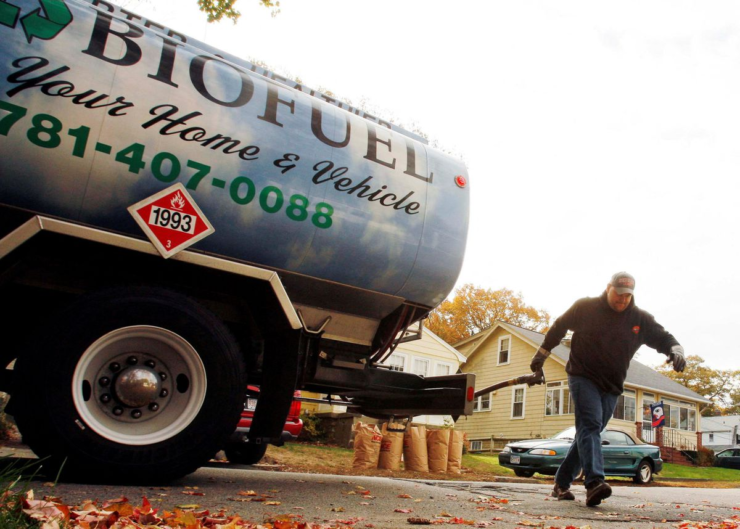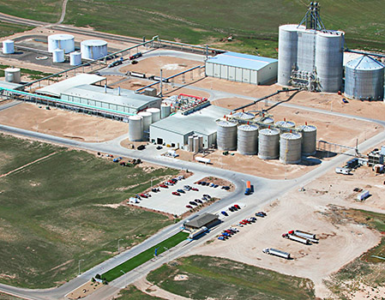US biofuels proposal would lift near-term greenhouse gas emissions, EPA says.
The U.S. Environmental Protection Agency’s proposal to increase biofuel blending mandates through 2025 would lead to a near-term increase in greenhouse gas emissions, before yielding reductions in the longer-term, according to agency documents.
The Renewable Fuel Standard requires the nation’s oil refiners to add billions of gallons of biofuels like corn-based ethanol into the fuel pool each year in a policy intended to help farmers, reduce energy imports, and combat climate change.
The EPA this month unveiled a proposal that would lift the volumes mandates over the next three years from 20.82 billion gallons in 2023 to 22.68 billion gallons in 2025 – including more than 15 billion gallons annually of convention biofuels like corn-based ethanol.
🔥 What about we co-host a webinar? Let's educate, captivate, and convert the biofuels economy!
Biofuels Central is the global go-to online magazine for the biofuel market, we can help you host impactful webinars that become a global reference on your topic and are an evergreen source of leads. Click here to request more details
That proposal would boost greenhouse gas emissions over the three-year term by between 81 million and 265.9 million metric tons as new tilling for corn, soy and other plantings releases carbon from the soil, according to the EPA’s internal analysis of the proposal, reviewed by Reuters.
That’s the climate equivalent of driving between 17.5 million and 57 million vehicles for one year, according to the EPA’s greenhouse gas equivalences calculator.
EPA’s analysis, however, projects that those emissions will be more than offset in the long-term due to reduced tailpipe emissions and other factors – assuming biofuel volume mandates don’t change after 2025.
For example, over 30 years the proposal would lead to a net reduction of greenhouse gas emissions of between 128 million to 1.16 billion metric tons, it said, akin to taking between 28 million and 250 million cars off the road for one year.
“Overall, based on the wide range of lifecycle GHG estimates in the scientific literature, the proposed volumes of renewable fuel are estimated to reduce GHG emissions,” the agency said in an emailed statement. It said it would be “inappropriate to truncate the analysis after 3 years.”
Valerie Thomas, a professor of systems engineering at the Georgia Institute of Technology and chair of the National Academy of Sciences, Engineering, and Medicine committee on lifecycle analyses for low-carbon transportation fuels, said the projected initial emissions increase was worrying. She echoed other scientists and policymakers who say emissions must fall rapidly to avert the worst effects of the changing climate.
Valerie Thomas, a professor of systems engineering at the Georgia Institute of Technology and chair of the National Academy of Sciences, said:
For driving near-term climate change, it’s the near-term emissions that matter.
She added that it was also vital for the EPA to monitor emissions over the course of the proposal to verify the long-term greenhouse gas emission benefits.
Over the course of the RFS, EPA has typically increased biofuels mandates over time, not dropped them.
Geoff Cooper, the head of the Renewable Fuels Association biofuel trade group, criticized the EPA projections.
Geoff Cooper, the head of the Renewable Fuels Association biofuel trade group said:
EPA’s analysis is flawed because it assumes cropland expansion will be necessary to support ethanol production volumes in 2023-2025.
“This purported ‘land use change’ assumed by EPA results in grossly exaggerated GHG emissions estimates for 2023-2025.”
In the EPA’s analysis, the ethanol portion of the volumes mandates could yield a net impact on emissions of anywhere between negative 99 million metric tons to positive 13.8 million metric tons over 30 years.
A study published this year in the Proceedings of the National Academy of Sciences found that ethanol is likely worse for the climate over its full lifecycle than straight gasoline because of the carbon lost during corn planting.
The biofuel industry and the U.S. Department of Energy have rejected that research, citing other studies showing ethanol’s lifecycle emissions far lower than gasoline.
READ the latest news shaping the biofuels market at Biofuels Central
U.S. biofuels proposal would lift near-term greenhouse gas emissions, EPA says, December 15, 2022








